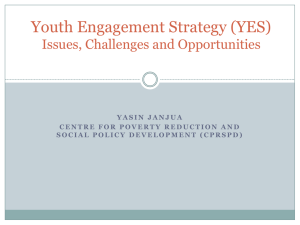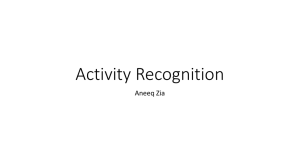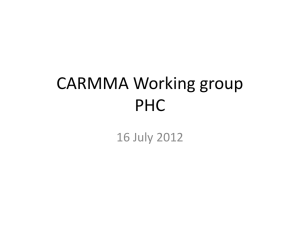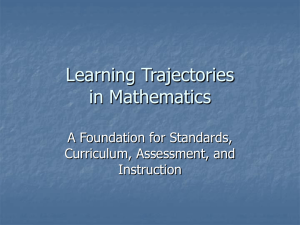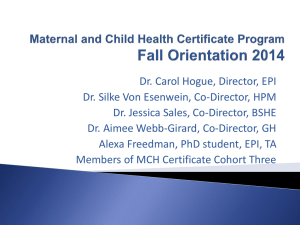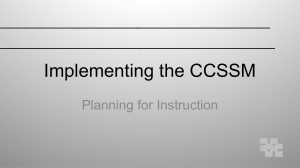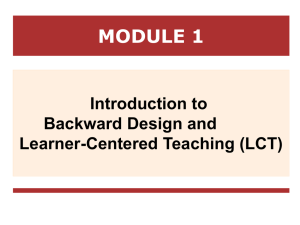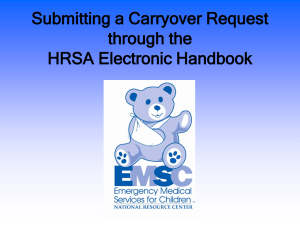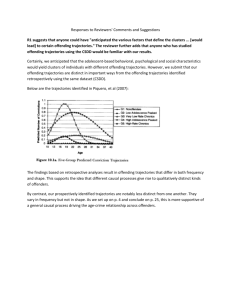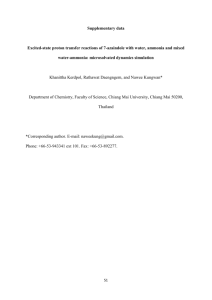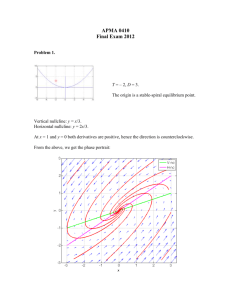Document
advertisement
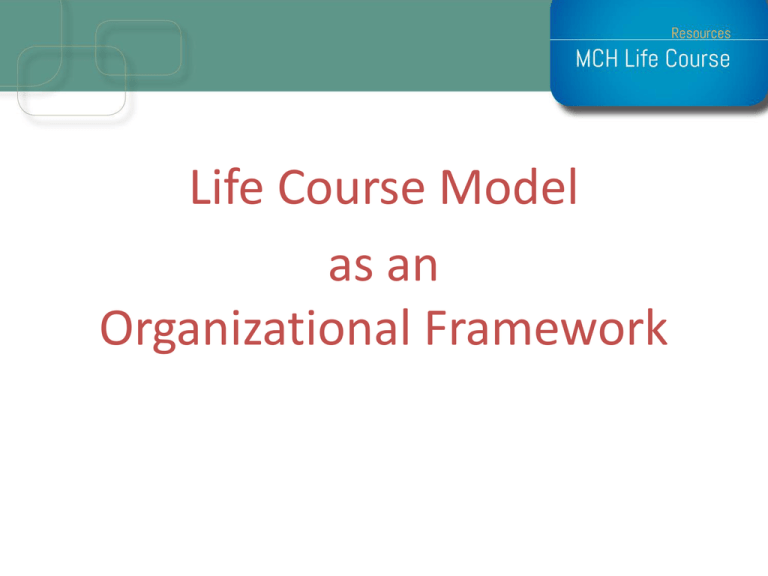
Life Course Model as an Organizational Framework Key Definitions and Concepts • • • • • • Life Course (vs. Life Cycle and Life Span) Risk and Protective Factors Pathways and Trajectories Early Programming Cumulative Impact Critical or Sensitive Periods Clarifying Terms • Life Span: length of time a species is capable of living or the length of an individual’s life • Life Cycle: regular, predictable series of life stages or reproductive cycle • Life Course: age-graded developmental trajectories shaped by contexts – Johns Hopkins School of Public Health What is Life Course? • Life Course is a theory or perspective that seeks to understand, explain, and improve health and disease patterns across population groups. – Amy Fine • Life Course suggests that a complex interplay of biological, behavioral, psychological, and social protective and risk factors contribute to health outcomes across the span of a person’s life. – Cheri Pies Life Course Concepts ‘T2E2’ • Timeline – health is cumulative and longitudinal, i.e., developed over a lifetime. • Timing – health and health trajectories are particularly affected during critical/sensitive periods. • Environment – the broader environment (biologic, social, physical, economic) affects health and development. • Equity – health inequality reflects more than genetics and personal choice. – Fine and Kotelchuck A life course approach recognizes the role of time in shaping health outcomes and incorporates time into models explaining health outcomes. How Time Matters • • • • Individuals’ health changes over time. Determinants of health vary over time. Relations between determinants and health can change over time. Relation between determinants and health may depend on time. – M.E. Hughes, JHSPH Time Scales • Individual time (chronological age, physical maturation, social norms) • Historical time (calendar year, year born, technological development, social change) • Others may be important for specific outcomes Possible Time Patterns • Trajectories – Upward, downward or mixed • Relation between determinants and health – Latent – Accumulation – Pathways – Critical and sensitive periods – Triggers – M.E. Hughes, JHSPH Risk and Protective Factors Protective factors improve health and contribute to healthy development. Risk factors diminish health and make it more difficult to reach one’s full potential. Factors are not limited to individual behavior or access to health, but can include family, neighborhood, community, and social policy. Life Course Perspective – Michael Lu and Neal Halfon Racial and ethnic disparities in birth outcomes: a life-course perspective. Maternal Child Health J. 2003; 7:13-30. Pathways and Trajectories Health pathways, or trajectories, are built or diminished over the life span. While individual trajectories vary, patterns can be predicted for populations and communities based on social, economic, and environmental exposures and experiences. – Fine and Kotelchuck, Rethinking MCH: The Life Course Model as an Organizing Framework, Concept Paper, DHHS, HRSA, October 2010. Early Programming Early experiences can program an individual’s future health and development. This includes prenatal programming as well as intergenerational programming (i.e. the health of the mother prior to conception) that impact disease or condition, or make and individual more vulnerable or susceptible to developing a disease or condition in the future. – Fine and Kotelchuck, Rethinking MCH: The Life Course Model as an Organizing Framework, Concept Paper, DHHS, HRSA, October 2010. Cumulative Impact While individual episodes of stress may have minimal impact in an otherwise positive trajectory, the cumulative impact of multiple stresses over time may have a profound direct impact on health and development, as well as an indirect impact via associated behavioral or health services seeking changes. – Fine and Kotelchuck, Rethinking MCH: The Life Course Model as an Organizing Framework, Concept Paper, DHHS, HRSA, October 2010. Critical or Sensitive Period While adverse events and exposures can have an impact at any point in a person’s life course, the impact is greatest at specific critical or sensitive periods of development (e.g. during fetal development, in early childhood, during adolescence, etc.). – Fine and Kotelchuck, Rethinking MCH: The Life Course Model as an Organizing Framework, Concept Paper, DHHS, HRSA, October 2010. Is Life Course Old or New? LCT marries long-term MCH concepts with new science • Barker Hypothesis – links LBW to increased risk of heart disease, diabetes. • Felitti’s ACE Study – links early childhood adverse events to increased risk of obesity, heart disease, diabetes, depression. • Neurons to Neighborhoods, NAS – early environments, nurturing relationships, parents are the “active ingredients” in healthy brain development – from the earliest ages forward. Is Life Course Old or New? (cont.) • Lu/Halfon – link disparities in birth outcomes to differential developmental trajectories of the mother, based on early life experiences (programming) and cumulative stress. • Epi-genetics – links environmental triggers to gene expression. The same science is also informing other fields. – Milton Kotelchuck MCH Life Course Literature Focuses on Two Key Questions • Why do health disparities exist and persist across population groups? • What are the factors that influence the capacity of individuals or populations to reach their full potential for health and well-being? Additional Concepts to Life Course Perspective • Interactive processes – The development of health over a lifetime is an interactive process, combining genes, environments and behaviors. • Lifelong development/lifelong intervention – Throughout life and at all stages, even for those whose trajectories seem limited, risk factors can be reduced and protective factors enhanced, to improve current and subsequent health and well-being. – Fine and Kotelchuck Critiques and Questions • • • • • Early programming — too deterministic? Too front-loaded? What does LCT tell us about later life stages? What does LCT tell us about CSHCN? How does LCT interface with genetic services? If it is all connected over a lifetime, how do we make the case for a focus on Maternal and Child Health? – Amy Fine Aligning Practice with LCT But, LCT also… • Greatly expands the opportunities for intervention: a much broader set of venues and partners over a much longer timeline • Suggests the need for better linkage (vertical, horizontal, temporal) • Encourages us to rethink and realign some of the current strategies and add new ones – Amy Fine A System’s Approach – Richmond and Kotelcheck

